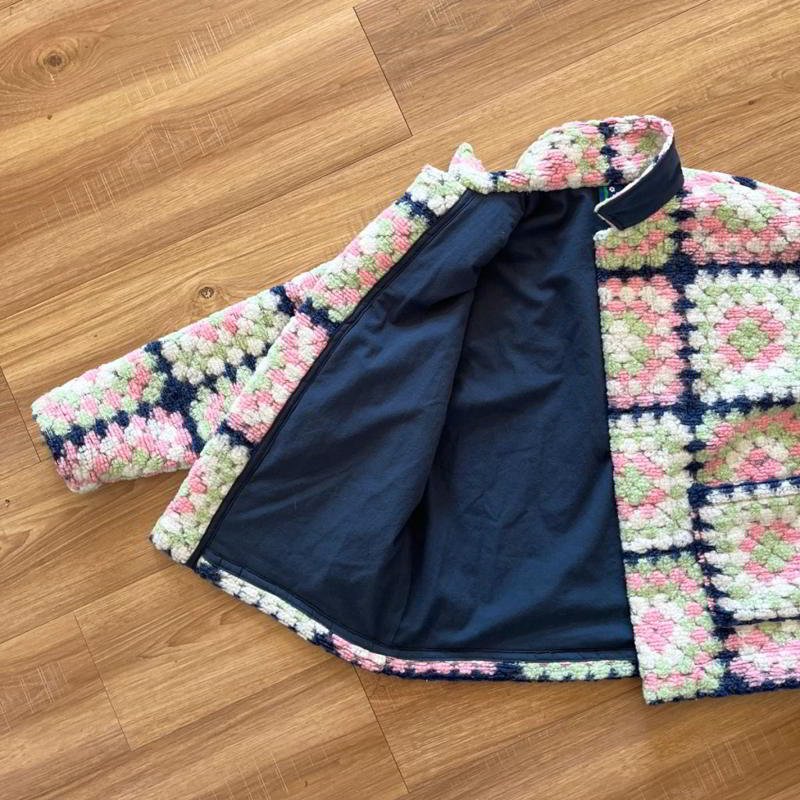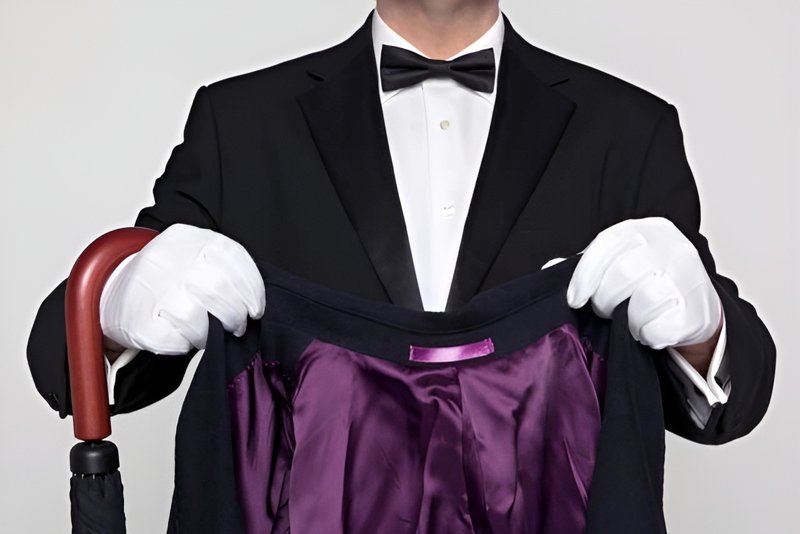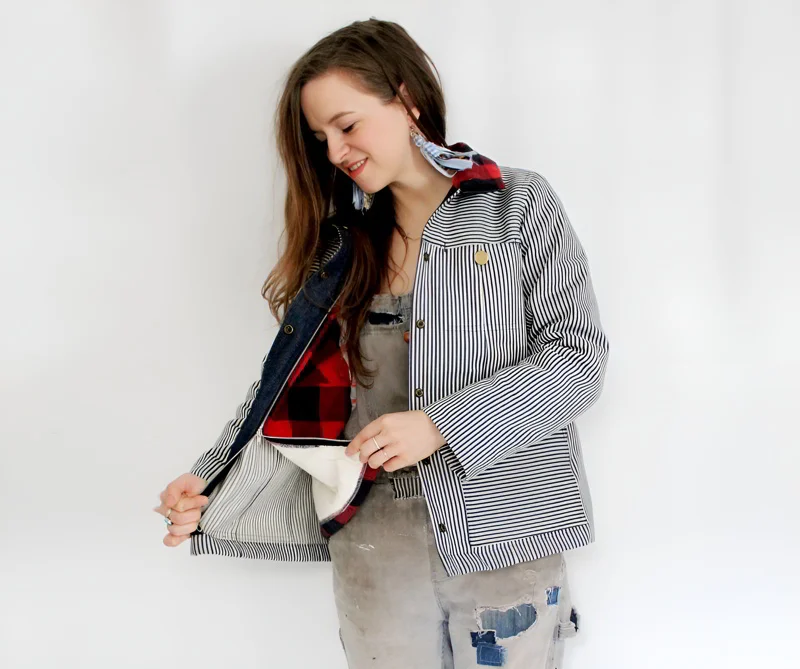Clothing Lining Explained: Quality And Business Impact
For clothing businesses, understanding lining is crucial for creating garments that meet customer expectations for quality, appeal, and comfort. This expert guide addresses the common challenge of selecting the right lining fabric, explaining how this choice significantly impacts the final product’s feel, durability, and overall presentation.
Readers will gain comprehensive knowledge about different lining types, materials (such as silk, cotton, and polyester), exploring their properties, specific benefits, and practical advice on making selections that enhance garment quality and align with business goals.
1. Defining lining in garment construction
1.1 More than just an inner layer
Lining (in sewing) refers to an inner layer of fabric or other material sewn into garments, hats, bags, and similar items. Fundamentally, its purpose extends beyond simply being inside; the lining covers the inner surface, providing a clean finish and enhancing wearability. Common materials include silk, polyester, viscose, and cotton fabric, chosen based on the outer garment and desired properties. Sewing and tailoring techniques attach this distinct layer inside the main shell.

1.2 Concealing the construction
A key function of lining in garment construction is achieving a neat finish by hiding the inner workings. The lining conceals elements like raw seam edges, interfacing materials (used to add structure), padding, and internal stitching. This concealment contributes significantly to a professional appearance, signaling higher quality and attention to detail to the customer, distinguishing well-made pieces from those with unfinished interiors. Skillful sewing ensures these construction details remain hidden.
2. How quality lining elevates your garments
2.1 Improving the feel against the skin
Lining provides a significant tactile benefit, directly impacting customer satisfaction. A smooth lining acts as a comfortable buffer between the wearer’s skin and potentially coarser outer fabrics, such as some wools or heavily textured materials. The smoothness enhances the overall wearing experience, making the garment feel more pleasant and luxurious. Choosing appropriate fabric properties for the lining is vital for achieving this desired feel.
2.2 Enhancing durability and reducing wear
Quality lining contributes to garment life by absorbing some of the stresses of wear. Movement, friction against the body or other clothes, and contact with body oils or perspiration can degrade fabric over time. The lining takes on much of this wearing strain, protecting the often more expensive or delicate outer fabric. This protective function reduces strain and helps maintain the garment’s integrity, extending its lifespan and representing better long-term value – a key aspect of quality.
2.3 Achieving a professional interior look
Beyond hiding construction elements, lining creates a visually appealing and professional appearance inside the garment. This neat finish contributes to the perceived value and reflects the level of craftsmanship. Discerning customers often inspect the interior finish of clothing when assessing quality, making a well-executed lining an important detail that reinforces a positive impression of the brand.
2.4 How lining supports the outer shell fabric
Lining can play a subtle but important role in garment structure. Adding an inner layer provides support to the outer fabric, helping the garment hang correctly (achieve the intended drape) and maintain its shape, especially when working with lightweight, fluid, or loosely woven shell materials. This support contributes to shape retention and ensures the garment looks as designed when worn.

2.5 Making garments easier to put on and take off
A practical, functional benefit of smooth lining, particularly in items like jackets and coats, is the ease of use provided. A slippery lining surface allows the garment to slide smoothly over other layers of clothing, reducing friction and making the process of putting the garment on and taking off much easier. This functionality enhances the daily wearing experience for the customer.
3. Clearing the confusion: lining vs. interlining vs. underlining
3.1 Lining
As established, lining is the standard practice for creating the innermost layer of a garment. Its primary roles are to provide a neat finish, enhance comfort against the skin, and cover internal construction. Typically, the lining is constructed as a separate unit and then sewn into the garment shell, covering the inner layer completely.
3.2 Interlining
Interlining is an additional layer specifically for warmth and insulation. Unlike standard lining, interlining is positioned between the main outer fabric and the inner lining. Typical materials include flannel, fleece, or quilted batting. This technique is common in outerwear like winter coats and jackets, where extra thermal protection is needed.
3.3 Underlining
Underlining (sometimes called backing) serves different purposes: adding body or structure, increasing opacity (preventing show-through), and supporting delicate fabrics. The construction method also differs significantly: underlining fabric is cut using the same pattern pieces as the outer fabric and is attached directly to the wrong side of each outer fabric piece before the main garment construction begins. The outer fabric and its attached underlining are then treated as a single layer throughout the sewing process.
4. Properties, pros and cons for business decisions
Selecting the right lining material involves balancing factors like feel, durability, breathability, and cost. Understanding the properties of different fibers helps in making informed decisions for your clothing line.

4.1 Natural fibers
Silk linings (Silk Habotai, Satin, Crepe)
Silk offers a luxurious feel, natural sheen, and good breathability, enhancing the perceived value of a garment. Specific types include lightweight Silk Habotai (also known as China silk, suitable for delicates), smooth Silk Satin, and drapey Silk Crepe de Chine.
- Pros: unmatched comfort, premium perception, breathable natural fiber.
- Cons: higher cost, requires delicate care (often dry clean only), can be less durable than synthetics for heavy wear. The luxurious feel often justifies the cost for higher-end garments.
Cotton linings (Voile, Lawn, Batiste)
Cotton linings are soft, highly breathable, absorbent, and generally gentle on sensitive skin. Lightweight options like Cotton Voile, Lawn, or Batiste are common.
- Pros: excellent comfort and breathability (ideal for warm weather, children’s wear), often machine washable, natural fiber.
- Cons: can wrinkle easily, lacks the slippery quality of silk or synthetics, potential for shrinkage if not pre-treated or cared for properly. Best suited for casual or summer garments.
4.2 Artificial fibers (cellulose-based)
Viscose/rayon linings
Derived from cellulose (wood pulp), Viscose/Rayon lining often mimics the softness and drape of silk. This artificial fiber is breathable and generally static-free.
- Pros: comfortable feel, excellent drape, breathable, often a cost-effective silk alternative, widely available.
- Cons: can wrinkle, loses strength when wet, may shrink if not washed carefully (check manufacturer’s instructions). A popular choice in ready-to-wear garments.
Cupro (including Bemberg)
Cupro is a regenerated cellulose fiber, typically made from cotton linter (a byproduct of cotton processing). Bemberg is a prominent brand name for Cupro.
- Pros: very silky and smooth feel, breathable, static-resistant, durable for a cellulose fiber, drapes well, offers excellent value proposition as a high-quality silk alternative. Frequently used in quality suit lining and jackets.
- Cons: can be more expensive than standard viscose or polyester, may require careful handling during sewing.
Acetate linings
Acetate is another cellulose-based artificial fiber, often characterized by a crisper hand than rayon.
- Pros: very affordable, offers a crisp texture that can add structure, moderately breathable, can have a subtle sheen.
- Cons: low durability (prone to ripping and fraying), wrinkles easily and creases can be hard to remove, less absorbent, susceptible to water stains. A budget option where durability is less critical.
4.3 Synthetic fibers
Polyester linings: Polyester is a synthetic fiber known for its strength and resilience.
- Pros: highly durable, very cost-effective, wrinkle-resistant, colorfast, easy care (often machine washable).
- Cons: not breathable (can feel warm and clammy), may have a ‘plastic-y’ feel depending on quality, prone to static cling, can retain odors. Widely used due to its low cost and durability, especially in budget-conscious lines.
4.4 Quick comparison table: Balancing cost, feel, durability and breathability
| Fiber Type | Typical Feel | Breathability | Durability | Relative Cost | Key Pro | Key Con |
|---|---|---|---|---|---|---|
| Silk | Smooth, luxurious | High | Med/Low | $$$ | Premium feel, breathable | Cost, delicate care |
| Cotton | Soft, natural | High | Med | $$ | Breathable, natural comfort | Wrinkles, not slippery |
| Viscose/Rayon | Soft, drapey | Med/High | Med/Low | $$ | Good drape, silk-like feel | Wrinkles, weaker when wet |
| Cupro (Bemberg) | Very smooth, silky | High | Med/High | $$ – $$$ | Breathable silk alternative | Can be pricier than Viscose/Poly |
| Acetate | Crisp, smoothish | Med | Low | $ | Very affordable, crisp texture | Low durability, wrinkles easily |
| Polyester | Smooth, variable | Low | High | $ | Durable, cost-effective | Not breathable, can feel synthetic |
5. Expert advice: selecting the ideal lining for your clothing line
5.1 Complementing the outer fabric
The most crucial guideline in fabric selection for lining is ensuring compatibility with the outer shell fabric. This involves several factors:
- Weight: lining should generally be lighter than or equal in weight to the shell fabric. A heavy lining in a lightweight garment can distort the drape.
- Stretch: if the outer fabric has stretch, the lining must also have stretch. Using a non-stretch lining in a stretch garment will restrict movement, cause pulling or puckering, and potentially lead to tears.
- Care compatibility: the lining’s care requirements should not be more demanding than the outer fabric’s. For instance, putting a dry-clean-only silk lining into a machine-washable cotton dress makes the entire garment dry-clean only. Always align care instructions. Ignoring these compatibility rules leads to poor garment performance and potential customer dissatisfaction.
5.2 Considerations by garment type
Dresses and skirts
- For sheer or lightweight fabrics like chiffon or georgette, choose very lightweight, anti-static linings such as Silk Habotai, fine Bemberg/Cupro, or a quality lightweight polyester to prevent clinging and provide opacity without adding bulk.
- For structured dresses or skirts made from fabrics like brocade or taffeta, an acetate or polyester taffeta lining can help maintain the crisp shape. A smooth viscose or Bemberg offers comfort.
- Velvet garments benefit from very smooth linings like silk satin or Bemberg to glide easily against the pile.
Jackets and coats
- The primary need for jacket lining and coat lining is smoothness for easy layering. Cupro/Bemberg, viscose, polyester, and silk satin are excellent choices.
- Durability is also important, especially around cuffs and hems.
- For added warmth, consider incorporating an interlining between the shell and the lining, rather than relying solely on a bulky lining fabric (which might impede smoothness).
Suits and trousers
- Suit lining and trouser lining require a balance of durability (to withstand friction, especially in trousers), breathability (for wearer comfort during extended periods), and smoothness for a professional feel and ease of movement.
- Cupro/Bemberg is widely regarded as a top choice due to its blend of these qualities. High-quality viscose is a common and effective alternative.
- Polyester is often used for cost reasons but sacrifices breathability, which can be a drawback in tailored clothing. Sleeve linings, in particular, benefit from maximum smoothness.
Knitwear considerations
- This point bears repeating due to its importance: garments made from knit or other stretch fabrics absolutely require a stretch lining. Options include stretch polyester blends, knit tricot fabrics, power mesh (for closer fitting garments), or stretch jersey linings. Failure to ensure stretch compatibility will compromise the garment’s fit, comfort, and longevity.
5.3 Color and pattern choices
Lining offers an opportunity for stylistic expression:
- Matching color: the most common and safest approach, creating a seamless look.
- Complementary color: a slightly different shade or tone that harmonizes with the outer fabric, adding subtle interest.
- Contrasting color: a bold choice that makes a statement when the garment is open or moves. This can become a signature element of a brand identity. Works best with solid-colored outer fabrics.
- Patterned lining: adds personality and a bespoke feel, often seen in higher-end jackets or bags. Consider that patterned linings might require more fabric and careful matching during cutting and sewing, potentially increasing production time and cost. Align the choice with your brand’s overall aesthetic.
5.4 Balancing quality, cost, and target market expectations
The choice of lining directly impacts the final garment cost and its perceived quality. Businesses must make strategic decisions based on their target audience and brand positioning.
- Are your customers expecting luxury and willing to pay a premium for features like silk or Cupro lining?
- Is value the primary driver, making durable and cost-effective options like polyester or acetate more appropriate?
Lining is an area where costs can be managed, but selecting a lining that feels cheap or performs poorly (e.g., tears easily, isn’t breathable) can significantly detract from an otherwise well-made garment and damage brand perception. Align your lining choice with the overall value proposition you offer your customers.
6. Specialized linings
6.1 Partial or half lining
Partial lining (or half lining) involves lining only specific areas of a garment, typically the upper back and front panels, and sometimes the sleeves.
Benefits: reduces bulk, increases breathability (especially useful in the back panel for warmer weather), lowers fabric cost and production time compared to full lining. Common in summer jackets, sport coats, and some unconstructed blazers. Provides a finished look where structure (like shoulder pads or chest pieces) is needed, while leaving other areas unlined.
6.2 Removable linings
Removable linings, often called liners, provide adjustable warmth. Usually made of quilted material, fleece, or faux fur, they attach to the inside of the garment with zippers, buttons, or snaps.
Function: allows the wearer to adapt the garment to different temperatures, adding significant insulation that can be removed in milder weather. Garments featuring these typically also have a thin, permanent finish lining so the inside looks presentable even when the warm liner is removed. Common in trench coats, parkas, and all-weather coats, adding versatility and value.

7. Related questions
7.1 How does lining affect the care instructions of a garment?
The lining choice directly impacts the required care for the entire garment. The care label must reflect the needs of the most delicate component. For example, if a machine-washable cotton jacket has a dry-clean-only silk or acetate lining, the entire garment must be labelled as dry-clean only to prevent damage to the lining. It is essential to verify and align the care requirements of both the outer fabric and the selected lining during the design and production process to provide accurate care instructions and avoid customer issues.
7.2 Can I use the same fabric for the lining and the outer shell?
Using the same fabric for both the outer shell and the lining is known as self-lining. This technique is sometimes employed, particularly with lighter-weight fabrics or for creating reversible garments. However, self-lining is often not ideal because the functional requirements for a lining (smoothness, less bulk, ability to glide) usually differ from those of the outer fabric (structure, appearance, durability). Using the main shell fabric as lining can also significantly increase cost if the outer fabric is expensive. Carefully consider if the properties of the shell fabric are suitable for lining purposes before choosing this method.
7.3 What’s the best lining for very lightweight or sheer outer fabrics?
For very lightweight or sheer outer fabrics like chiffon, organza, or lace, the lining needs to be equally lightweight and preferably possess anti-static properties to prevent clinging. Excellent choices include silk habotai (China silk), fine Bemberg/Cupro, or high-quality lightweight polyester linings designed for delicates. In some cases, particularly if opacity is the main concern rather than just providing a finished interior, using an underlining attached directly to the sheer fabric might be a better or complementary solution to a separate hanging lining.
7.4 Are sustainable or eco-friendly lining options available?
Yes, there is a growing range of sustainable and eco-friendly lining options available for businesses looking to reduce their environmental impact. These include fabrics made from organic cotton (grown without synthetic pesticides), Tencel™ or Lyocell (regenerated cellulose fibers produced in a closed-loop system), recycled polyester (made from post-consumer plastic bottles), Cupro (utilizes cotton linter, a pre-consumer waste byproduct), and silk produced using more environmentally conscious methods (like organic or peace silk processes). Availability and cost for these sustainable fabric options can vary, but they offer viable alternatives for brands focused on eco-conscious production.
Read more:
Choosing the right lining is far more than an afterthought; it’s a fundamental decision that significantly impacts garment quality, comfort, durability, and the overall finish. As demonstrated, a well-chosen lining enhances the wearing experience, extends the garment’s life, and contributes to a professional appearance – all factors that influence customer satisfaction and perception of value.
Making informed decisions about lining materials and types, considering compatibility with the outer fabric and target market expectations, showcases attention to detail and a commitment to quality that strengthens brand reputation. Investing thoughtfully in lining is ultimately an investment in the long-term success and appeal of your clothing line. For specialized projects or further guidance on specific fabric pairings, consider consulting with fabric specialists.






















